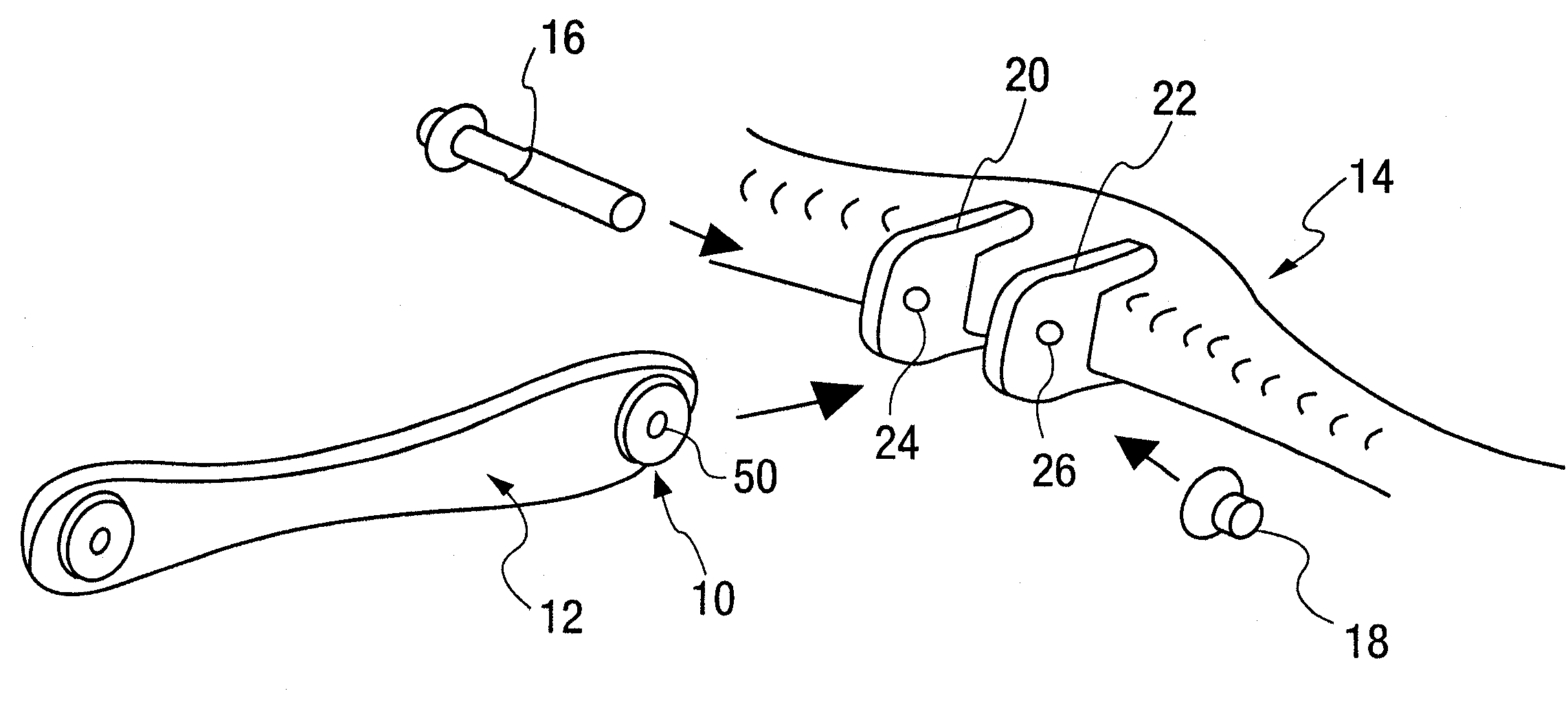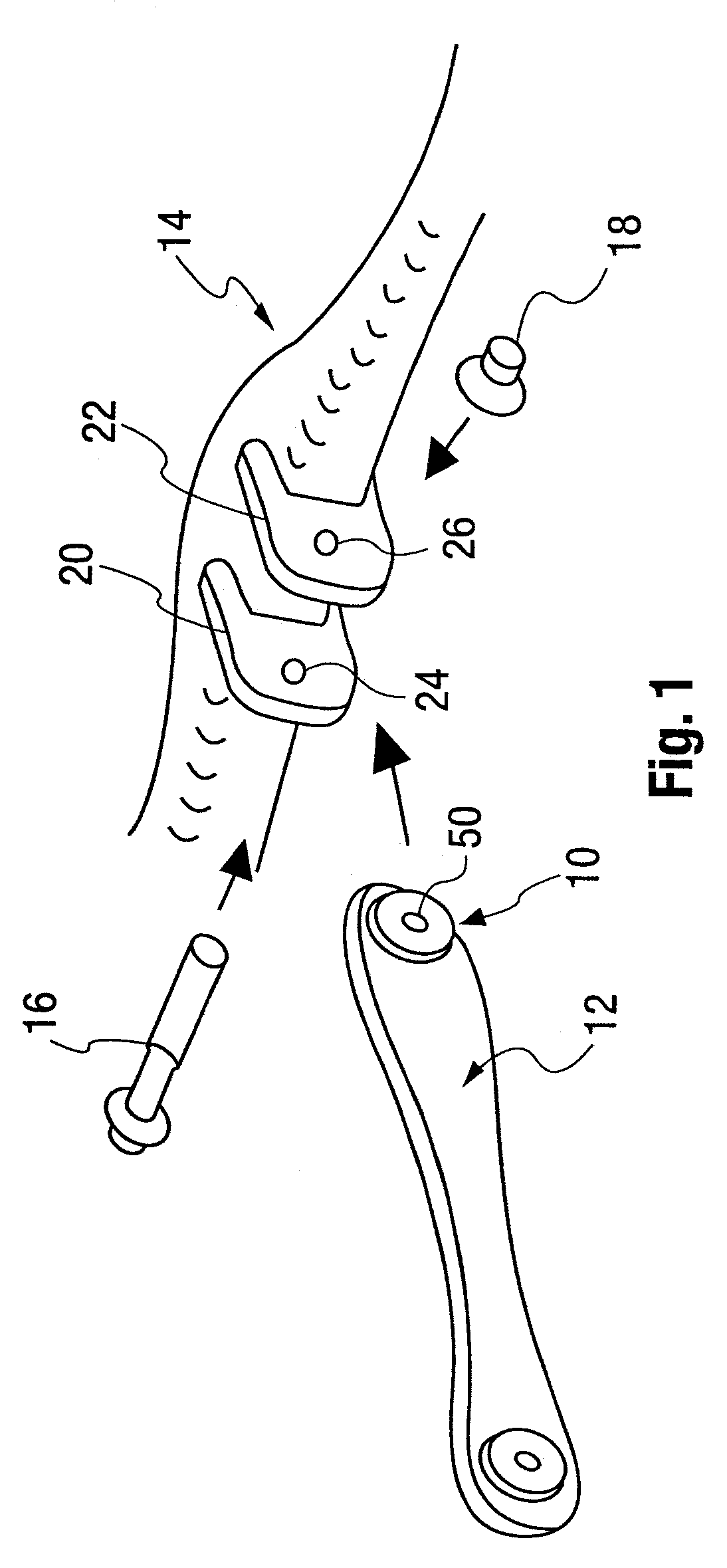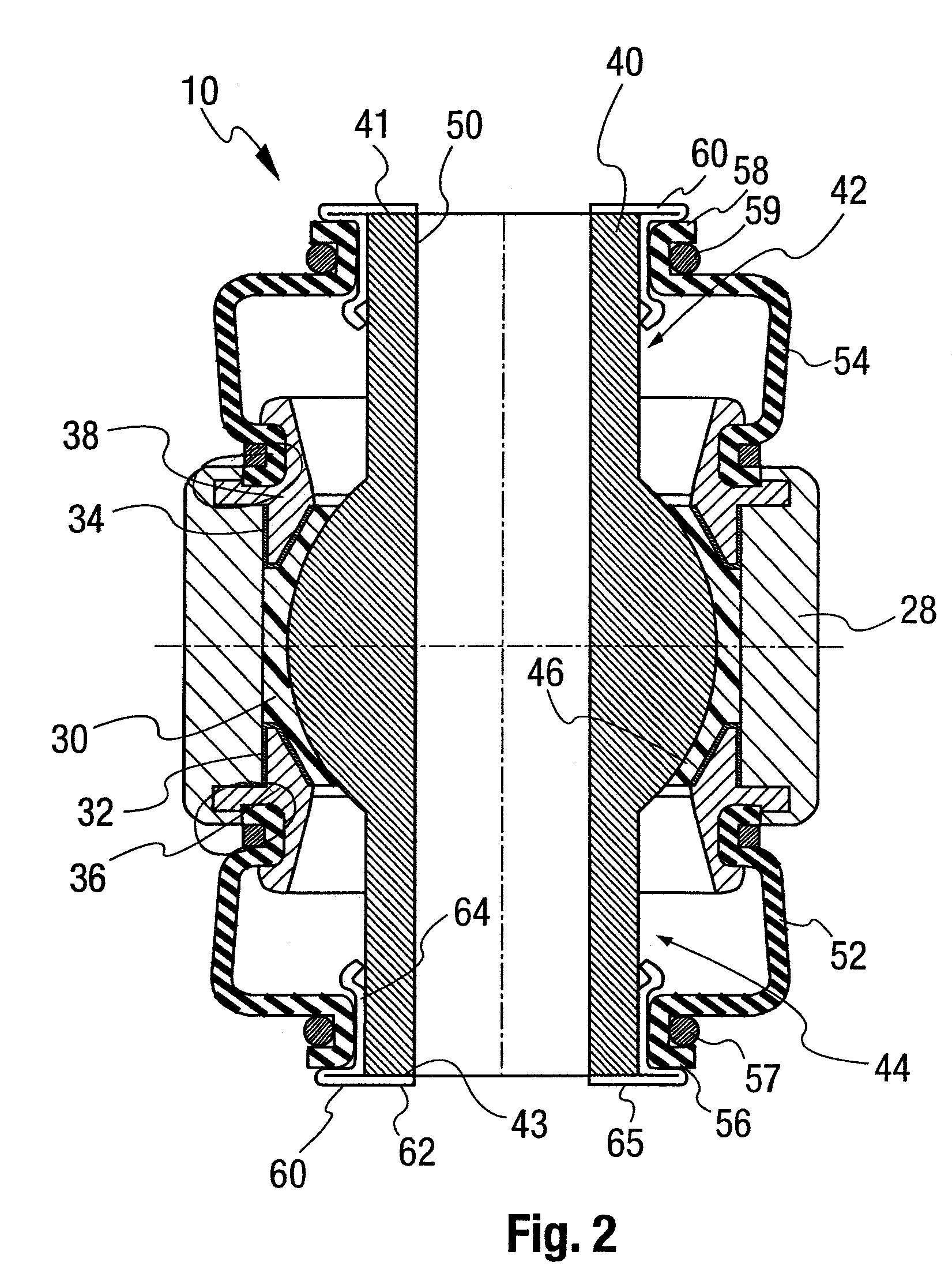Cross axis ball and socket joint with sealing ring for cross axis sleeve ends
a cross-axis ball and socket joint technology, applied in the direction of couplings, rod connections, mechanical devices, etc., can solve the problems of reducing the crush load for a certain diameter, and difficult sealing of cross-axis joints, etc., to achieve simple design, reduce the crush load, and reduce the crush load. a certain diameter
- Summary
- Abstract
- Description
- Claims
- Application Information
AI Technical Summary
Benefits of technology
Problems solved by technology
Method used
Image
Examples
first embodiment
[0027]FIG. 2 shows the ball joint 10 according to the invention. A metallic housing 30 is provided supporting a bearing shell 30 in an inner space. The bearing shell 30 is held in place by a lower intermediate part 32 and lower housing ring 36 at one end and by an upper intermediate part 34 and upper housing ring 38. The rings 36 and 38 are held in position by a deformation of the ends of the material of the main housing part 28, to lock the rings 36 and 38 in position. Within the bearing shell 30 a ball sleeve 40 is provided, particularly with a ball sleeve bearing surface 46 in contact with the bearing shell 30. The ball sleeve 40 has the inner through opening 50 and has first and second (shown as upper and lower) pivot pins (also referred to as studs) with outer sleeve surfaces 42 and 44. The ball sleeve 40 also has a first end face 41 and a second end face 43. A sealing ring 60 is provided at each end of the ball sleeve 40. Each sealing ring 60 includes a radially extending part...
third embodiment
[0030]A third embodiment according to invention is provided with the structure as shown in FIG. 3 or 4 (or one of the other embodiments) but with a roughened inner surface at extending part 62 and / or the axially extending part 64. Additionally, or as an alternative, the facing surfaces (side 42, 44 and / or bottom 43, 41) of ball sleeve 40 may be roughened. FIG. 5 shows a sealing ring 60″ with an axially extending part 64 with an inner surface 66 in contact with the outer surface 44. The radially extending part 62 and the axially extending part 64 do not need to have a bent part 73, 71 but this may also be provided otherwise as shown in FIGS. 3 and 4. The contact and the connection of axially extending part 64 to outer surface 44 is in the form of an interference fit. Further, good connection properties may be obtained in this regard wherein the surface 66 (or the outer surface of 44 or 42) are roughened to increase friction. This interference fit and / or roughened surface fit provides...
fourth embodiment
[0031]FIG. 6 shows a cross-sectional view of a fourth embodied according to the invention. a sealing ring 90 is provided in place of the sealing ring 60 shown in FIG. 2. The sealing ring 90 provides a sealing seat 98 for receiving the end 56 (or 58) of the bellows seal 52 (or 54). However the sealing ring 90 is provided as a thick piece of metal with machined surfaces with a surface 92 at the end face 43 (or 41) and a contact surface 91 that will be in contact with the connection part (20 or 22). The machined or otherwise provided surfaces also include a radially protruding part 93 with one side protruding into a groove 72 at the outer sleeve surface 44 (or 42) and another side protruding to form the seat 98. The sealing ring 90 may be pressed onto the end of the sleeve 40 allowing the radially protruding part 93 to engage the grooved 72 to lock the sealing ring 90 in place.
PUM
 Login to View More
Login to View More Abstract
Description
Claims
Application Information
 Login to View More
Login to View More - R&D
- Intellectual Property
- Life Sciences
- Materials
- Tech Scout
- Unparalleled Data Quality
- Higher Quality Content
- 60% Fewer Hallucinations
Browse by: Latest US Patents, China's latest patents, Technical Efficacy Thesaurus, Application Domain, Technology Topic, Popular Technical Reports.
© 2025 PatSnap. All rights reserved.Legal|Privacy policy|Modern Slavery Act Transparency Statement|Sitemap|About US| Contact US: help@patsnap.com



